

Hermann Dudley Murphy (25 August 1867, Marlborough, Massachusetts - 1945, Lexington, Massachusetts) was an American painter, known mostly for still-lifes and landscapes. He also worked as an illustrator, art teacher and frame designer.


Hermann Dudley Murphy (25 August 1867, Marlborough, Massachusetts - 1945, Lexington, Massachusetts) was an American painter, known mostly for still-lifes and landscapes. He also worked as an illustrator, art teacher and frame designer.
His father was an Irish-born shoe manufacturer and his mother was from an old New Hampshire family. He had his primary education at the Chauncy Hall school in Boston then, in 1886, enrolled at the Boston Museum School, where he studied with Emil Otto Grundmann, Joseph DeCamp and Edmund C. Tarbell, who had the most influence on his style. In the following years he would, in fact, be counted among the "Tarbellites". [1]
For a time, he worked as an illustrator. This included a commission to accompany the Nicaraguan Canal Expedition from 1887 to 1888. [1]
He moved to Paris in 1891, where he studied at the Académie Julian with Benjamin-Constant and Jean-Paul Laurens. He would live there for five years. During his stay he was introduced to the work of James McNeill Whistler and absorbed elements of the Aesthetic style. He exhibited some portraits at the Salon in 1895. Two years later, he and his wife Caroline Bowles, returned to the United States and settled in Winchester, Massachusetts. [2]
In 1903, he and Charles Prendergast opened the "Carrig-Rohane" (Red Cliff) frame shop in Winchester. It was named after the Irish town where Murphy's father was born. In 1903 he taught frame-making at the Arts and Crafts-oriented Byrdcliffe Colony in Woodstock, NY, where he also created a set of doors painted with landscape for a Byrdcliffe chest. [3] By 1905, Murphy and Prendergast's enterprise was successful enough that it relocated to Boston. In 1912 the Swedish woodcarver, Walfred Thulin (1878–1949) became a member of the company. [1] By 1915, the level of business had grown to the point where he asked his friend, the art dealer Robert Vose (1873–1964), to take over its day-to-day management. It remained in operation until 1939.
Murphy exhibited at the Armory Show but, by 1928, had given up modernism. The Boston Sunday Post quotes him as saying; "These Modernist painters say that they paint not what they see, but what they feel--well, Heaven help them if they feel like what they paint!" [4]
In 1930, he became an Associate of the National Academy of Design and was named an Academician in 1934. He was also a member of the Boston Art Club and the Copley Society, among several others. From 1931 to 1937, he taught in the Art Department at Harvard University. In his later years, he concentrated on floral still lifes. He and his wife were also avid canoeists and travelled extensively in Central America and the Caribbean. His works are displayed at museums throughout the United States.

Art colonies are organic congregations of artists in towns, villages and rural areas, who are often drawn to areas of natural beauty, the prior existence of other artists, art schools there, or a lower cost of living. They are typically mission-driven planned communities, which administer a formal process for awarding artist residencies. A typical mission might include providing artists with the time, space, and support to create, fostering community among artists, and providing arts education, including lectures and workshops.
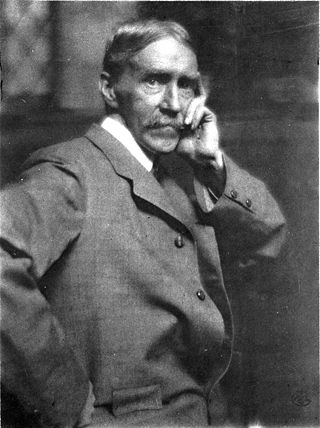
Maurice Brazil Prendergast was an American artist who painted in oil and watercolor, and created monotypes. His delicate landscapes and scenes of modern life, characterized by mosaic-like color, are generally associated with Post-Impressionism. Prendergast, however, was also a member of The Eight, a group of early twentieth-century American artists who, aside from Prendergast, represented the Ashcan School.
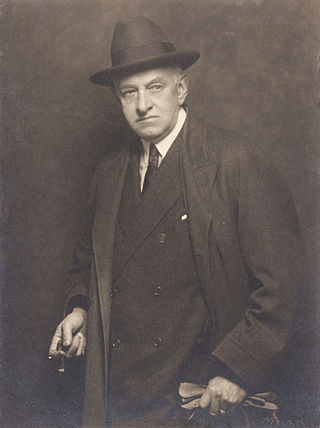
Willard Leroy Metcalf was an American painter born in Lowell, Massachusetts. He studied at the School of the Museum of Fine Arts, Boston, and later attended Académie Julian, Paris. After early figure-painting and illustration, he became prominent as a landscape painter. He was one of the Ten American Painters who in 1897 seceded from the Society of American Artists. For some years he was an instructor in the Women's Art School, Cooper Union, New York, and in the Art Students League, New York. In 1893 he became a member of the American Watercolor Society, New York. Generally associated with American Impressionism, he is also remembered for his New England landscapes and involvement with the Old Lyme Art Colony at Old Lyme, Connecticut and his influential years at the Cornish Art Colony.
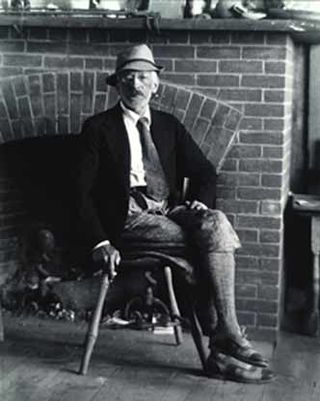
Charles Herbert Woodbury, was an American marine painter.

William Trost Richards was an American landscape artist. He was associated with both the Hudson River School and the American Pre-Raphaelite movement.

Frank Weston Benson, frequently referred to as Frank W. Benson, was an American artist from Salem, Massachusetts known for his Realistic portraits, American Impressionist paintings, watercolors and etchings. He began his career painting portraits of distinguished families and murals for the Library of Congress. Some of his best known paintings depict his daughters outdoors at Benson's summer home, Wooster Farm, on the island of North Haven, Maine. He also produced numerous oil, wash and watercolor paintings and etchings of wildfowl and landscapes.

Peter Pezzati was an American portrait artist who was located in the Boston area. His art was rooted in the Renaissance tradition. His artwork included landscapes, pen and ink drawings, watercolors, pastel and oil portraits.
Dudley Bowles Murphy was an American film director.
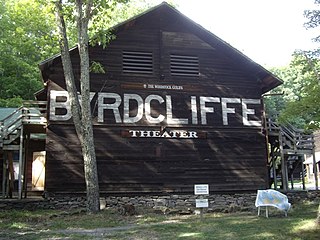
The Byrdcliffe Colony, also called the Byrdcliffe Arts Colony or Byrdcliffe Historic District, was founded in 1902 near Woodstock, New York by Jane Byrd McCall and Ralph Radcliffe Whitehead and colleagues, Bolton Brown (artist) and Hervey White (writer). It is the oldest operating arts and crafts colony in America. The Arts and Crafts movement arose in the late nineteenth century in reaction to the dehumanizing monotony and standardization of industrial production. Byrdcliffe was created as an experiment in utopian living inspired by the Arts and Crafts movement.

William Franklin Draper was an American painter and a lieutenant commander in the United States Navy.

The Boston School was a group of Boston-based painters active in the first three decades of the twentieth century. Often classified as American Impressionists, they had their own regional style, combining the painterliness of Impressionism with a more conservative approach to figure painting and a marked respect for the traditions of Western art history. Their preferred subject matter was genteel: portraits, picturesque landscapes, and young women posing in well-appointed interiors. Major influences included John Singer Sargent, Claude Monet, and Jan Vermeer. Key figures in the Boston School were Edmund C. Tarbell, Frank Weston Benson, and William McGregor Paxton, all of whom trained in Paris at the Académie Julian and later taught at the School of the Museum of Fine Arts. Their influence can still be seen in the work of some contemporary Boston-area artists.

Frederick S. Wight was a multi-talented cultural leader who played a significant role in transforming Los Angeles into a major art center. An influential educator at the University of California, Los Angeles, who presented museum-quality exhibitions at the campus gallery later named the Wight Art Gallery, Wight was also a highly accomplished painter and writer. In his final years he concentrated on his painting, producing radiant landscapes that appear to be animated by mysterious, spiritual forces.

John Fabian Carlson was a Swedish-born American Impressionist painter.
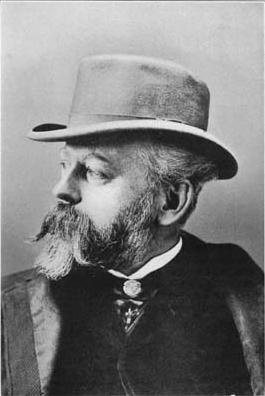
Henry Sandham was a Canadian painter and illustrator. He was the brother of author and numismatist Alfred Sandham.
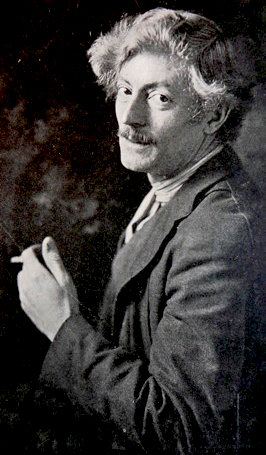
Dawson Dawson-Watson (1864–1939) was a British-born Impressionist painter who became famous in 1927 for winning the largest cash prize in American art, the Texas Wildflower Competitive Exhibition. He was one of the first members of the famous Impressionist colony in Giverny, France and was a prominent teacher in Hartford, Connecticut, St. Louis, Missouri and San Antonio, Texas.

Bolton Coit Brown was an American painter, lithographer, and mountaineer. He was one of the original founders of the Byrdcliffe Colony in Woodstock, NY, part of what is now referred to as the Woodstock Art Colony.

Ernest Lee Major (1864–1950) was an American painter.
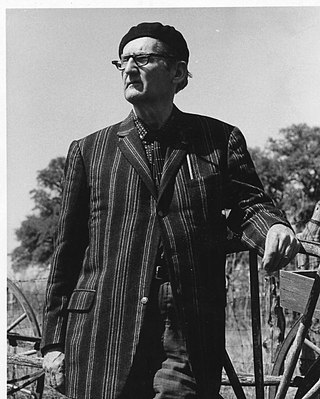
Arthur William Wilson was an American artist who painted under several known pseudonyms, including Winslow Wilson and Pico Miran. In Gloucester, Wilson/Miran has been considered an early actor in the Post Modern Art Movement. He is widely quoted from his Manifesto For Post-Modern Art, published in 1951, under the name Pico Miran.
Zulma Steele (1881–1979) was an American visual artist, she one of the pioneering women of the Arts and Crafts movement and Modernism in New York. Arts journalist for the New York Times, Grace Glueck noted that Steele was a "progressive-minded artist and artisan whose work was considered avant-garde." She married a farmer, Nielson Parker, in 1926. After he died in 1928, Steele traveled extensively in Europe, Haiti, and the Bahamas. She returned to upstate New York and died in New Jersey at 98 years of age.
William Samuel Horton was an American Impressionist painter who mostly painted landscapes and water scenes. He spent a large part of his life in Europe, mostly in France and England, where he trained and developed his impressionist style with major impressionist artists. He is considered by art critics, gallerists and museums to be one of the major members of American Impressionism, following on painters such as Mary Cassatt and Childe Hassam, but with a production mostly centered on European motives.